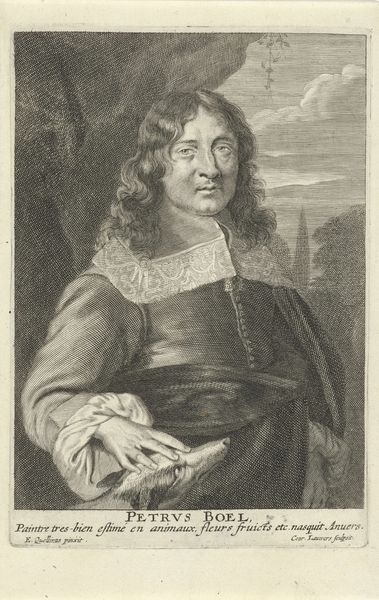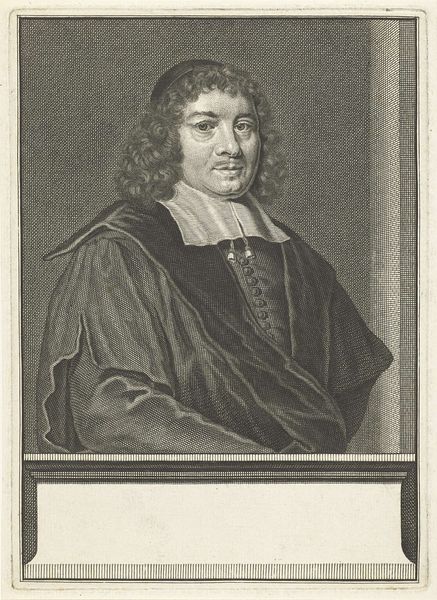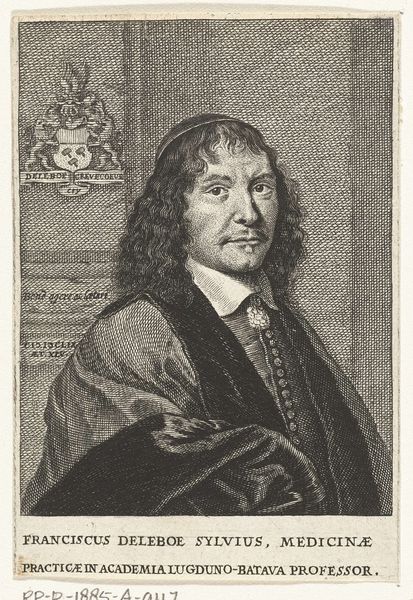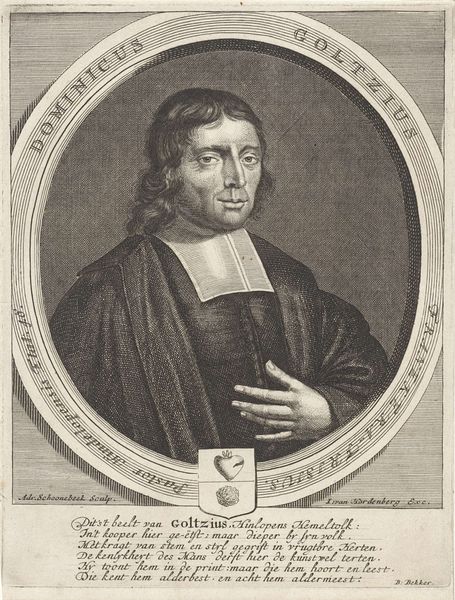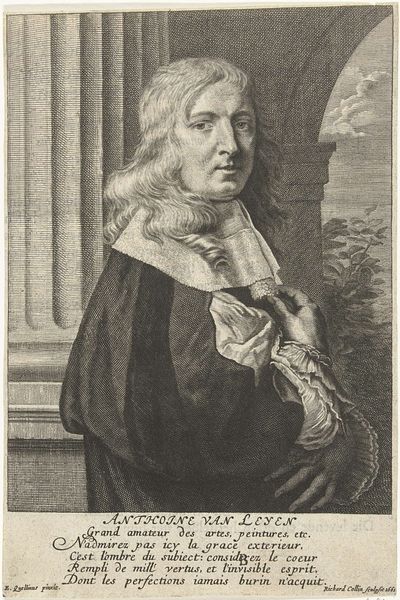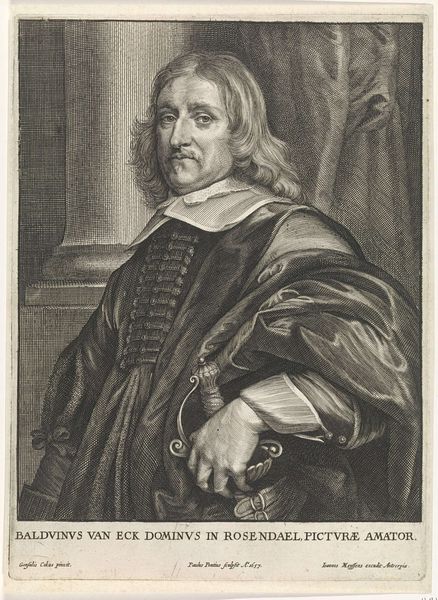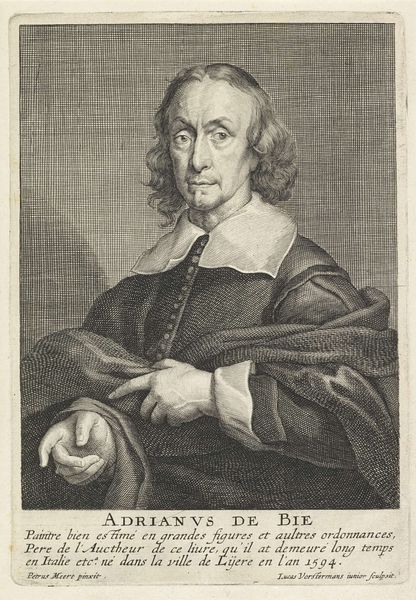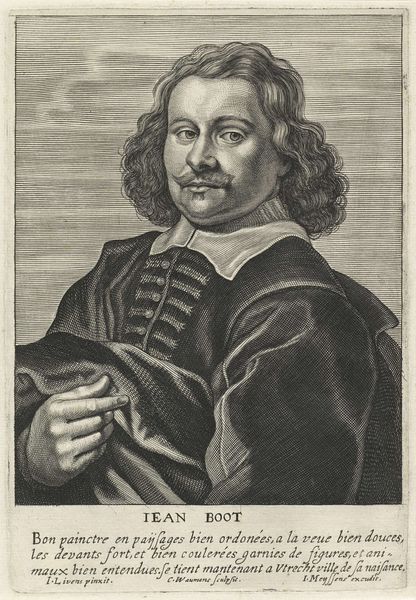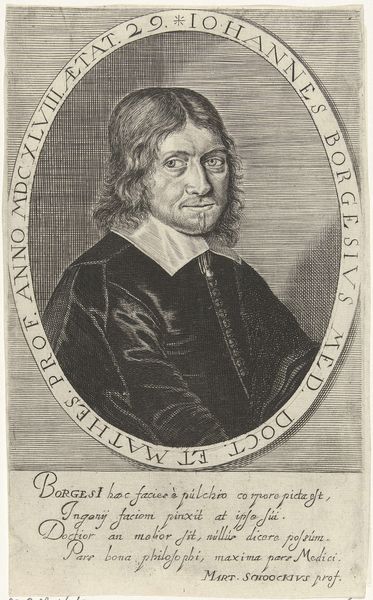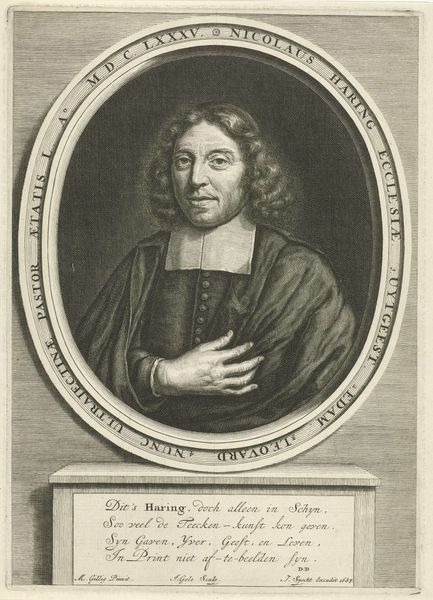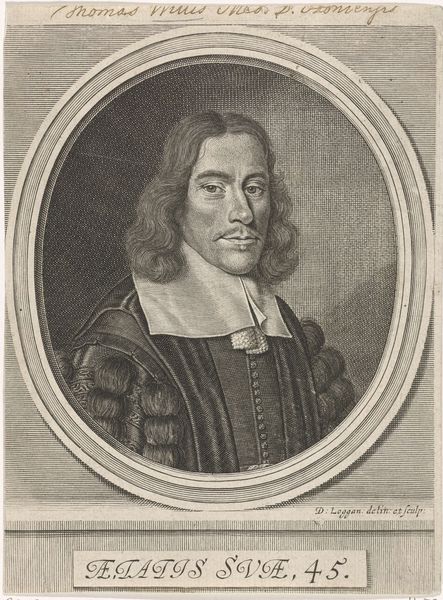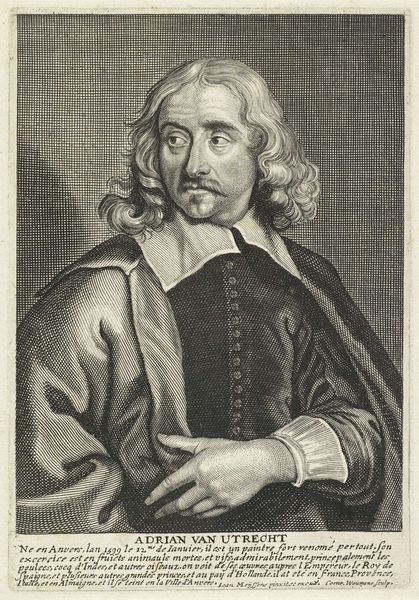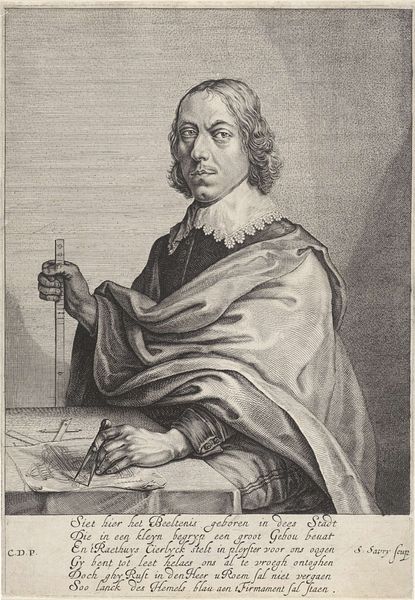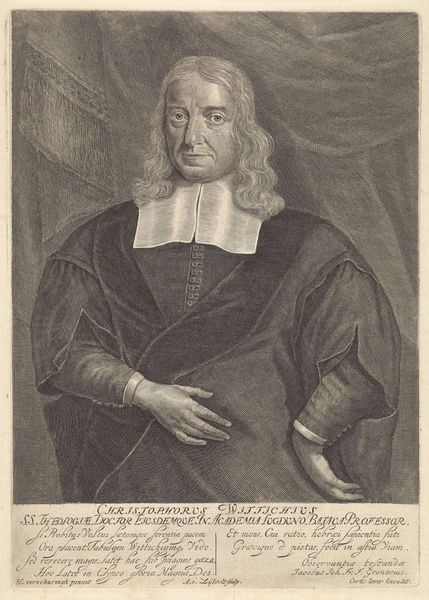
metal, engraving
#
portrait
#
baroque
#
portrait image
#
metal
#
history-painting
#
engraving
Dimensions: height 186 mm, width 138 mm
Copyright: Rijks Museum: Open Domain
Editor: This is a portrait of Pieter Verbruggen the First, dating sometime between 1649 and 1662, made with metal engraving by Conrad Lauwers. There's something melancholic about it, partly the muted tones, partly the head he's holding. How would you interpret the visual and social messaging in a portrait like this? Curator: Well, considering its historical moment, it is vital to read portraits not just as representations, but also as strategic image-making. The printmaking process allowed this portrait to circulate widely, beyond Verbruggen's immediate circle. The portrait then plays a role in establishing and promoting his reputation as a preeminent sculptor "demeurant en Anuers," that is, in Antwerp. What aspects of the image contribute to this messaging, would you say? Editor: Definitely the way he holds the sculpted head, presenting it as proof of his skill, almost like a trophy. It emphasizes his profession directly. Curator: Precisely! Consider how artists strategically deployed their self-representation. This portrait aims at creating a public persona, carefully curated, to cement Verbruggen's place in the art world and society. And engraving, as a reproducible medium, enabled that wide dissemination, reinforcing his artistic legacy beyond the elite circles of painting and sculpture. What does it say about the art world that printed portraits of sculptors were circulating widely? Editor: It suggests an expansion of the audience for art, perhaps? Or that art was becoming more tied to personal brands, and fame? Curator: Both valid points! We often think of branding as a contemporary concern, but in many ways artists have always been conscious of crafting a public image that affects not just the perception of their work but also their economic and social standing. So, in this case, the portrait serves to advertise Verbruggen's talent and solidify his position in the competitive art market of 17th-century Antwerp. It really adds another layer to understanding the social role of Baroque portraiture. Editor: That's so fascinating – I hadn't considered it in such a strategic way before. Thanks for pointing that out!
Comments
No comments
Be the first to comment and join the conversation on the ultimate creative platform.
